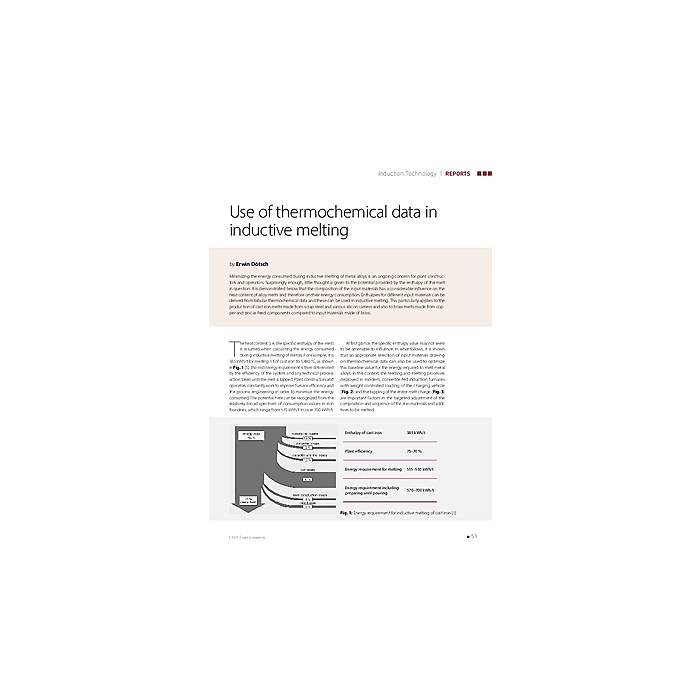Use of thermochemical data in inductive melting
€4.90
In stock
article number
00541_2017_01_03
Minimizing the energy consumed during inductive melting of metal alloys is an ongoing concern for plant constructors and operators. Surprisingly enough, little thought is given to the potential provided by the enthalpy of the melt in question. It is demonstrated below that the composition of the input materials has a considerable influence on the heat content of alloy melts and therefore on their energy consumption. Enthalpies for different input materials can be derived from tabular thermochemical data and these can be used in inductive melting. This particularly applies to the production of cast iron melts made from scrap steel and various silicon carriers and also to brass melts made from copper and zinc as feed components compared to input materials made of brass.
| Authors | Erwin Dötsch |
|---|---|
| Publishing Date | 1 Jan 2017 |
| Format | |
| Zeitschrift | heat processing - Ausgabe 01 2017 |
| Publisher | Vulkan-Verlag GmbH |
| Language | English |
| Title | Use of thermochemical data in inductive melting |
| Description | Minimizing the energy consumed during inductive melting of metal alloys is an ongoing concern for plant constructors and operators. Surprisingly enough, little thought is given to the potential provided by the enthalpy of the melt in question. It is demonstrated below that the composition of the input materials has a considerable influence on the heat content of alloy melts and therefore on their energy consumption. Enthalpies for different input materials can be derived from tabular thermochemical data and these can be used in inductive melting. This particularly applies to the production of cast iron melts made from scrap steel and various silicon carriers and also to brass melts made from copper and zinc as feed components compared to input materials made of brass. |
Write Your Own Review

